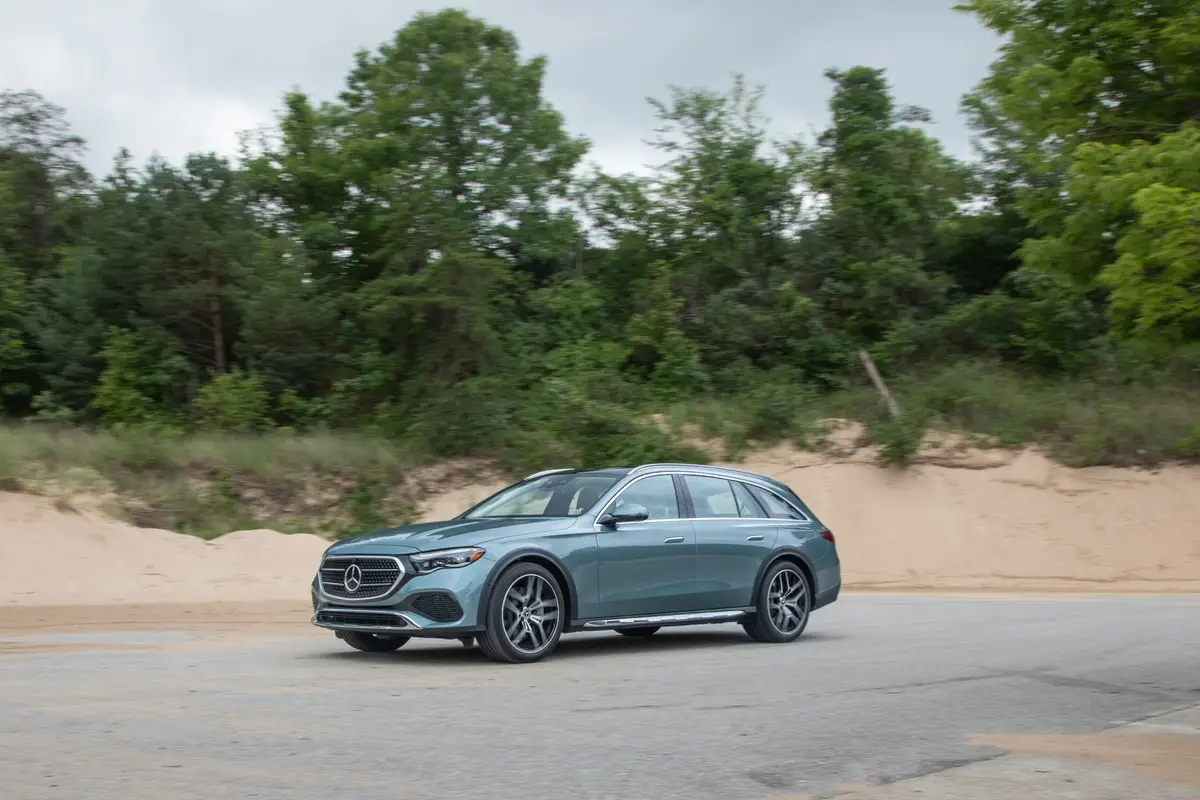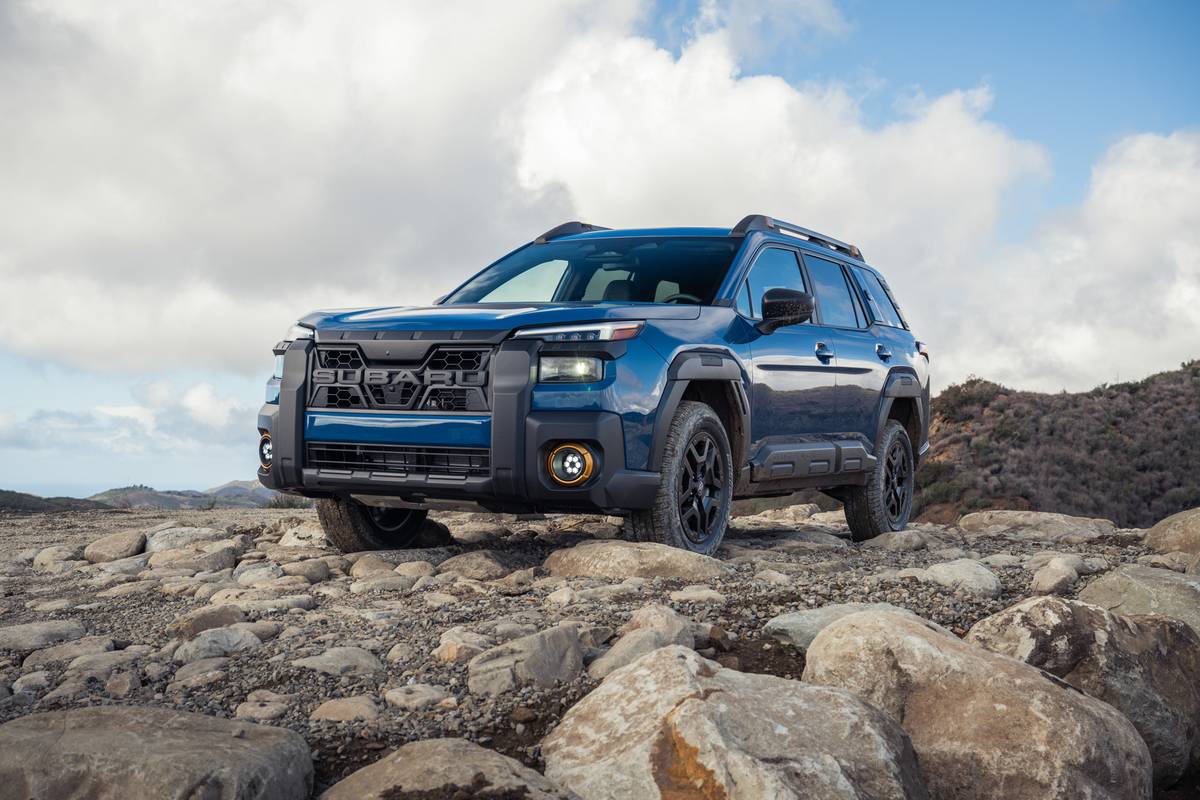Star-Telegram.com's view
Mazda’s midsize, five-passenger crossover vehicle, the CX-7, returns for its fourth year for 2010 with a mild facelift, along with a new base engine and lower starting price.
Similar to and partially based on the same architecture as the Ford Edge and Lincoln MKX, the CX-7 is the only one of the three to offer four-cylinder engines; the Ford and Lincoln models come only with V-6s.
In the 2010 CX-7, two four-cylinder engines are available, and as before, no V-6 is offered.
There are six trim levels for 2010, four with front-wheel drive and two with all-wheel drive.
The two lowest-priced models – the SV ($21,550 plus $750 freight) and the Sport ($22,340) – come only with front-wheel drive and a new normally aspirated 2.5-liter four-cylinder engine rated at 161 horsepower and 161 foot-pounds of torque.
That engine is connected to a five-speed automatic transmission, giving the CX-7 quite decent fuel economy for such a roomy family vehicle – 20 mpg city/28 highway.
Still available in the upper-level trims is the turbocharged, 2.3-liter four-cylinder that was used across the board in the CX-7 in its first three years, rated at 244 horsepower and 258 foot-pounds of torque.
That one, connected to a six-speed automatic, offers EPA ratings of 18 city/23 highway in the front-wheel-drive Touring ($25,800) and Grand Touring ($31,185) models, and 17/23 in the all-wheel-drive Touring ($27,500) and Grand Touring ($32,885) models.
Our tester was the Sport model, which came with just a few options and a reasonable sticker price of $25,990, including freight and extras. They included Sirius satellite radio ($430), a retractable cargo cover ($125), scuff plates ($145), fog lights ($400), a cargo net ($50), and the Sport Convenience Package ($1,750), which tacked on automatic climate control, power driver’s seat, heated front seats, a moon roof, and the rear parking aid with backup camera.
The styling changes for 2010 weren’t substantial enough to make this the second generation of the CX-7; instead, Mazda says, they are “enhancements for a clearer identity and more-refined character.”
Specifically, the vehicle gets a new rear bumper, front fascia, lower grille and a larger five-point grille similar to those on the RX-8, MX-5 and Mazda3.
Grand Touring models come with new front fog-light trim and special accents on the grille, mirror housings and door handles, all designed to distinguish it from the lower-priced versions.
Depending on the trim level, the CX-7 comes with 17-, 18- or 19-inch wheels, with the 19-inch a new alloy wheel type.
The steeply raked windshield gives the vehicle a sporty look, and the bulging fenders are part of the new Mazda design theme found on other models, as well. The aerodynamic exterior includes tight gaps and flush doors and windows to help reduce drag and wind noise.
Inside is a new steering wheel with integrated controls for the audio system and cruise control, along with new gauges featuring cool blue illumination, white pointers and three-dimensional dials.
A new driver-information display was installed in the center of the instrument panel, and features a trip computer, display for the optional rearview camera, and the screen for the optional navigation system (standard on Grand Touring models).
One thing that often irks me about interior trim is shiny chrome that reflects sunlight into the driver’s eyes, something that is particularly annoying in the Sun Belt states. For 2010, Mazda has put anti-glare trim rings on the air-conditioner vents. Also new are softer-padded front and rear door armrests.
While our low-end CX-7 tester came with just a minimum of technology, including the rearview camera (a new necessity, in my opinion), there are other high-tech options available that help add convenience and safety to the vehicle.
Those include blind-spot monitoring in both side mirrors, a Bluetooth hands-free phone connection (except in the SV model), and memory power front seats (Grand Touring model).
Although the turbocharged four-cylinder engine adds some fun to this vehicle, the new normally aspirated (non-turbo) four-cylinder in our tester realistically gave me all the power I needed for routine driving on freeways, city streets and country roads.
The CX-7’s ride is comfortable but not cushy enough to take away the important crisp roadhandling characteristics that Mazda fans expect from one of this automaker’s vehicles. The vehicle corners quite well for a family wagon, giving the driver more of a feel of a Mazda6 sedan than a bulky SUV.
Mazda attributes the CX-7’s great handling to the lightweight unibody construction – body and frame combined in a single structure – along with the MacPherson-strut front and multi-link rear suspension. The car also features coil springs, anti-roll bars, and re-tuned front and rear dampers.
Our cloth front bucket seats were quite comfortable, and the kids in the back didn’t complain about the rear bench seat, which can be folded (60/40 split) to expand the cargo area when there are no rear passengers. Three adults can sit back there rather comfortably as long as they’re just average size, but it’s a better fit for two adults and a child.
Standard on our Sport model were 17-inch alloy wheels, power windows/mirrors/door locks with remote, six-way manual driver’s seat, air conditioning, Bluetooth audio/phone connection, illuminated vanity mirrors, leather-wrapped steering wheel, front seatback map pockets, lockable center console, AM/FM/compact-disc audio system with four speakers and auxiliary input, two 12-volt power outlets, and a rear wiper/defogger.
For safety, there are front seat-mounted side air bags, roof-mounted side-curtain air bags for both rows, child-seat mounts, tire-pressure monitoring, four-wheel antilock disc brakes, traction control, and electronic stability control.
The optional all-wheel drive, which automatically splits the power as needed between front and rear wheels, is meant mostly for wet or slippery surfaces, but also helps with cornering on twisty country roads. It’s not intended for serious off-road use, but the vehicle can easily handle maintained, unpaved park roads.
The automotive columns of G. Chambers Williams III have appeared regularly in the Star-Telegram since 1994. Contact him at 210-250-3236; chambers@star-telegram.com.
2010 Mazda CX-7
The package: Compact, five-passenger, five-door, four-cylinder, rear- or all-wheel-drive crossover utility vehicle.
Highlights: Updated for 2010, the CX-7 gets a new lower entry price and a new normally aspirated base four-cylinder engine.
Negatives: No V-6 engine upgrade offered for more power or towing capacity.
Engines: 2.5-liter normally aspirated inline four-cylinder; 2.3-liter turbocharged inline four-cylinder.
Transmission: Five-speed automatic (2.5-liter); six-speed automatic (2.3-liter).
Power/torque: 161 HP./161 foot-pounds (2.5-liter); 244 HP./258 foot-pounds (2.3-liter).
Length: 184.3 inches.
Curb weight: 3,496-4,001 pounds.
Cargo volume: 29 cubic feet behind rear seat; 58.6 cubic feet with rear seat folded.
Towing capacity: 1,500 pounds (2.5-liter); 2,000 pounds (2.3-liter).
Brakes, front/rear: Disc/disc, power, antilock.
Fuel capacity/type: 16.4 gallons, unleaded regular (2.5-liter); 18.2 gallons, unleaded premium (2.3-liter).
EPA fuel economy: 20 mpg city/28 highway (2.5-liter, 2WD); 18/25 (2.3-liter, 2WD); 17/23 (2.3-liter, AWD).
Major competitors: Nissan Murano, Ford Edge, Hyundai Santa Fe, Chevrolet Equinox, GMC Terrain, Dodge Journey, Jeep Liberty, Toyota Highlander, Mitsubishi Endeavor, Kia Sorento, Volkswagen Tiguan.
Base price range: $21,550-$32,885 (plus $750 freight).
Price as tested: $25,990, including freight and options (Sport model with 2.5-liter engine and 2WD).
On the Road rating: 8.7 (of a possible 10).
Prices shown are manufacturer’s suggested retail; actual selling price may vary.
Latest news



